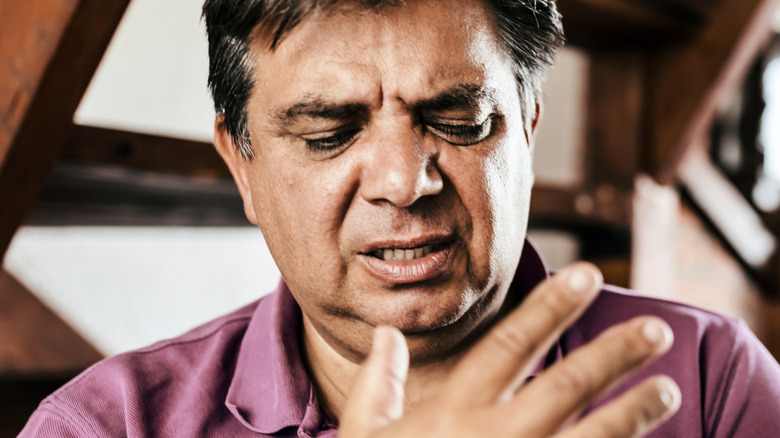
When unusual changes occur in our body parts, it’s natural to feel concerned. However, some bodily irregularities might not be as alarming, given that various environmental factors can cause them.
Consider dry, cracked, and peeling skin. Known medically as xerosis cutis, xeroderma, or simply xerosis, this condition is relatively common. It can appear on various body parts, typically on the extremities, and its likelihood increases with age. Causes of dry skin include frequent handwashing, exposure to extreme temperatures, prolonged sun exposure, and certain medications.
Sometimes, dry, cracked skin on hands and fingers might indicate a medical issue. It’s suggested that, in rare instances, cracked fingertips could be linked to cancer. (Red skin may also be a warning sign of cancer.) However, while this connection might exist, it’s not necessarily causal; cracked fingers may not be a direct cancer symptom but rather a side effect of cancer treatment.
Cancer-related causes of dry, cracked fingers

In a discussion with the MD Anderson Cancer Center, dermatologist Dr. Saira George explained how certain cancers might reveal themselves through visible changes in finger appearance.
For instance, squamous cell carcinoma may manifest as rough, scaly skin patches, while basal cell cancers could lead to crusts and scabs. (These types of cancer can sometimes be diagnosed through visual examination.) Non-Hodgkin lymphoma might also cause scaly patches on different body parts, while rashes could indicate paraneoplastic skin disorders, which are potential cancer indicators. George notes: “Most dry, scaly areas of skin aren’t due to cancer.” (Learn about the various causes, types, and treatments related to skin cancer.)
According to the National Cancer Institute, treatments like radiation therapy, chemotherapy, immunotherapy, and targeted therapy can cause dryness and cracking not only on finger skin but also on nails.
Your dry, cracked fingers could mean something else

Consulting a healthcare professional upon noticing any unwelcome bodily changes is wise, but cracked and dry skin on your fingertips shouldn’t immediately cause a cancer scare. This symptom might indicate an emerging or undiagnosed medical condition.
The most common disease-related cause of cracked fingertip skin is a skin condition. Eczema, often seen on the fingertips, can occur elsewhere on the body and is characterized by scaly skin and rashes. Similarly, psoriasis, an autoimmune disorder, can cause dry, itchy, and painful skin patches.
Other potential causes of skin dryness and cracking, on fingertips or elsewhere, include diabetes, fungal infections, and deficiencies in vitamin A, vitamin B3 (niacin), vitamin D, iron, or zinc.




